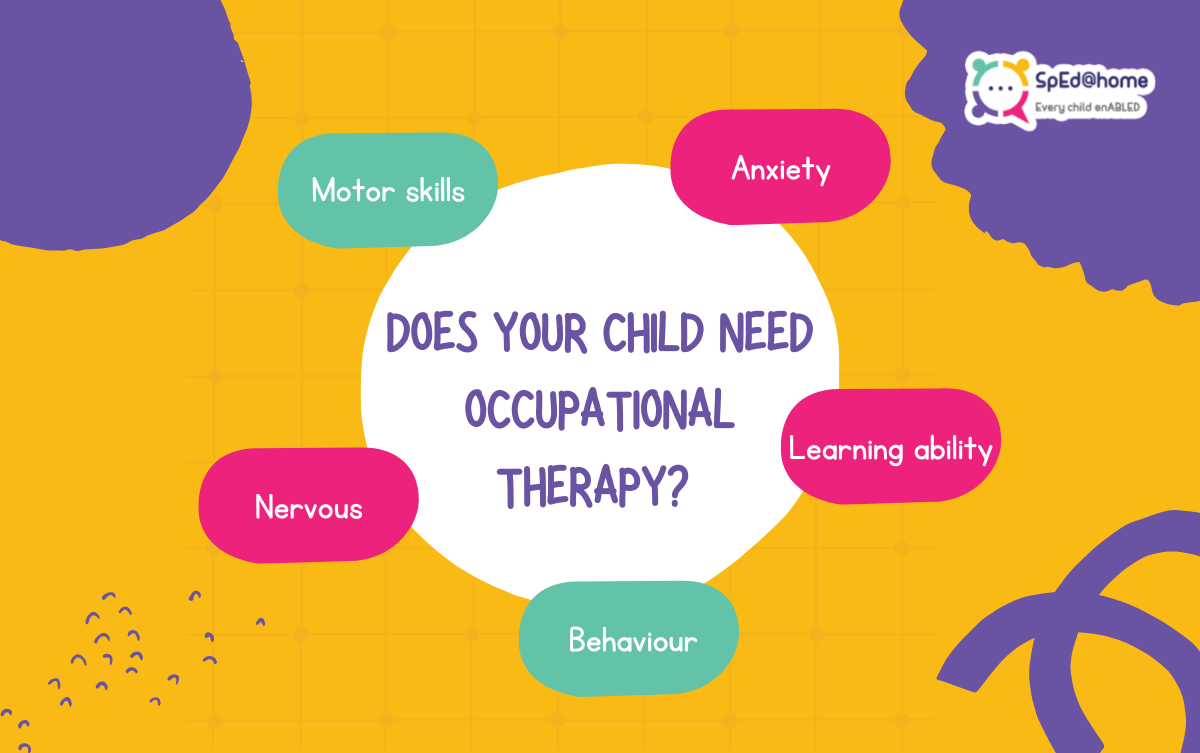Use of self-care and work and play activities to promote and maintain health, prevent disability, increase independent function, and enhance development. This is how Occupational Therapy plays an important role in helping children with a range of common childhood disorders – particularly – Autism, ADHD, anxiety disorders, and issues related to the three-Rs of learning: Dyslexia, Dysgraphia, and Dyscalculia.
Areas of development for children with special needs
When it comes to children with special needs, Occupational Therapists (including their online counterparts) utilize fun activities such as board games, swings, slides, and other appropriate obstacle courses in order to help them practice several of the skills listed below. Learning these activities results in the gradual rewiring of their brains.
Sensory circuits
“Sensory circuits are a series of activities designed specifically to wake up all the senses,” writes Occupational Therapist Corinna Laurie for Autism.org.uk, adding that it’s “a great way to energize or settle children into the day.” It’s how a Paediatric Occupational Therapist will usually start the day with a child, typically consisting of some sensory-motor task that helps bring them to a state that’s conducive to learning. Through-out any session, the following kinds of sensory circuits are performed:
-
- Activities that are found to be calming, such as lifting weights, wall pushing and other similar muscle-intensive activities. These activities help in increasing the child’s ability to regulate their own sensory inputs, in addition to enhancing their awareness of space.
-
- Activities that are found to be alerting, such as rope-skipping, basketball bouncing, star jumps, spinning and many others. These activities help stimulate the child’s Central Nervous System (CNS), thus preparing them for learning later on in the day.
-
- Activities deemed as being organising activities, such as wobble-board walking and juggling. These activities help the child’s brain and body to work together.
Importance of Assessments
As you may have gathered from the write-up thus far, Occupational Therapy focuses not so much on helping children with special needs learn, but on getting these children in a zone where they are more likely to learn. This is why Occupational Therapy Assessments are so important. These assessments, like the ones provided by us over here at SpEd@home, take stock of the child’s core strengths in order to help in designing customized education plans that can aid in their holistic development as opposed to simply improving academic performances. Typically, such assessments consist of:
-
- An overall profile that summarises their issues from an academic, cognitive, emotional, behavioural and developmental standpoint.
-
- A remedial report that provides a clear understanding of their strengths and weaknesses in areas such as literacy (spelling, grammar, reading fluency etc.) and numeracy (data handling, geometry, algebra etc.)
-
- An Occupational Therapy Report, that covers the following common issues:
-
- Social skills
-
- Cognition
-
- Performance during daily activities
-
- Fine and gross motor skills
-
- Sensory skills
-
- Perception skills
-
- An Occupational Therapy Report, that covers the following common issues:
Click here to book an Assessment for your child
Diet and healthy food habits
Speaking of sensory processing skills, we feel it’s necessary for readers interested in the benefits of Occupational Therapy for kids to understand what a sensory diet is. According to Healthline, “A sensory diet is a program of sensory activities kids perform during the day to ensure they’re getting the input their bodies need. An occupational therapist usually designs it.” Similar to how we physically require the right kinds and amounts of nutrients in regular intervals throughout a typical day, a sensory diet does the same for the kinds of activities that our bodies require in order to feel stimulated.
The effects of a sensory diet are both cumulative (long-term) and immediate (short-term). Given that it effectively restructures one’s nervous system, a few important effects of having one are as follows:
-
- It helps increase children’s attention spans and alertness
-
- It helps in limiting undesirable sensory behaviours
-
- It helps children avoid environmental transitions with less stress
Given that Occupational Therapy is a continuous process, parents themselves also need to step in in order to continue the therapy work after their children come back home.
-
- Giving them a big, firm bear hug
-
- Squeezing playdough or putty
-
- Making them carry or organise heavy books
-
- Stretching resistance bands using their hands
-
- Doing chair and wall push-ups
Fine Motor activities
-
- Playing with puzzles
-
- Rolling out snakes with clay or play dough
-
- Picking up coins and putting them in a piggy bank
-
- Shredding paper by tearing them into strips
-
- Playing card games
-
- Making bookmarks or paper-planes
-
- Creating paper-clip chains
-
- Building towers with small blocks
-
- Colouring pictures using small crayons
-
- Popping bubble-wrap sheets














